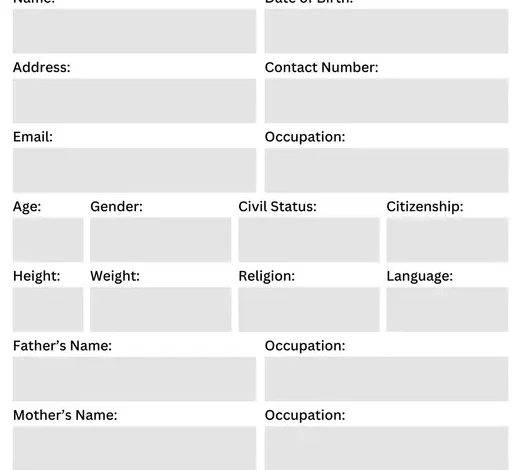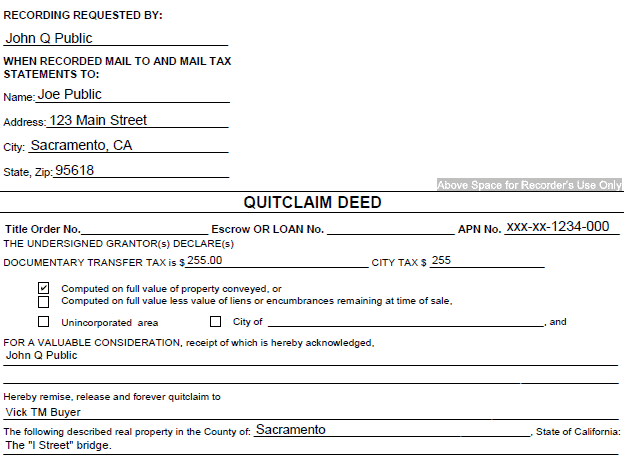Understanding Quit Claim Deeds: A Comprehensive Guide

Quit Claim Deeds when it comes to transferring property, various methods and documents can be used. One type of document that often raises questions is the *quit claim deed*. While it may sound simple, understanding its implications, benefits, and potential risks is essential for anyone considering its use. This article will guide you through the ins and outs of quit claim deeds, presented in a casual yet knowledgeable manner.
### 1. What is a Quit Claim Deed?
A quit claim deed is a legal document used to transfer an individual’s interest in a piece of property to another person without guaranteeing that the title is clear of any claims or liens. In essence, it is a fast and straightforward way to transfer ownership, but it comes with limitations.
#### Defining the Basics
Unlike a warranty deed, which provides a guarantee that the grantor (the person transferring the property) holds clear and legal ownership, a quit claim deed only transfers whatever interest the grantor currently has. If the grantor has full ownership of the property, then the quit claim deed transfers that complete ownership. However, if there are issues with the title—such as liens or ownership disputes—the quit claim deed does not protect the new owner from those problems.
#### Common Use Cases

Quit claim deeds are most commonly used in scenarios where the transfer of property occurs between people who know each other and trust one another. These scenarios might include:
– Transferring property between family members
– Adding or removing a spouse from the property title during a marriage or divorce
– Correcting mistakes on a property title (e.g., misspellings)
– Transferring property into or out of a trust
#### The Name Itself
It’s worth noting that the name “quit claim” suggests the grantor is “Quit Claim Deeds” or relinquishing any claim they may have over the property. It implies that the grantor gives up any ownership rights without making any promises about the property’s history or existing obligations.
### 2. How Does a Quit Claim Deed Work?
Understanding the mechanics of a quit claim deed is essential before diving into its potential benefits and drawbacks.
#### The Process of Executing a Quit Claim Deed
To execute a quit claim deed, the grantor must prepare a deed document that includes:
– The name of the grantor (the person giving up their interest)
– The name of the grantee (the person receiving the interest)
– A legal description of the property
– The signatures of both parties
After the deed is signed, it typically needs to be notarized to confirm the identities of those involved. The notarized deed should then be filed with the county recorder’s office to ensure the change of ownership is legally recognized.
#### What the Deed Does and Does Not Do
It’s crucial to understand that a quit claim deed:
– **Does** transfer whatever ownership interest the grantor has at the time of signing.
– **Does not** provide any assurance that the grantor’s interest is valid or that the title is free of issues.
This means that if the grantor doesn’t have a legitimate claim to the property or if there are hidden liens, the grantee could end up facing serious legal and financial challenges.
### 3. The Advantages of Using a Quit Claim Deed
Despite its limitations, there are certain advantages to using a quit claim deed.
#### Simplicity and Speed
One of the main benefits of using a quit claim deed is its simplicity. Unlike more complex property transfers, quit claim deeds require minimal paperwork and can be completed quickly. This is particularly helpful when time is of the essence, such as in family or divorce-related transfers.
#### Cost-Effectiveness
Quit claim deeds are often less expensive than warranty deeds or other formal property transfer methods. This makes them a popular choice when transferring property between relatives or when no significant financial stakes are involved.
#### Flexibility in Specific Situations
Quit claim deeds are highly useful for correcting minor mistakes on property titles or when shifting property between trusts or family members. They provide a straightforward way to make these changes without undergoing an extensive title examination or paying significant fees.
### 4. Potential Risks and Drawbacks
While quit claim deeds offer convenience, they are not without their downsides. Being aware of these potential pitfalls can help you make an informed decision.
#### Lack of Protection for the Grantee
The most significant risk for the grantee is that a quit claim deed provides no guarantee that the title is clear of other claims. This means that if there are liens, unpaid taxes, or disputes over ownership, the grantee will bear the burden of resolving these issues. This lack of protection is why quit claim deeds are generally not recommended for transactions between strangers or when purchasing property from unknown sellers.
#### Title Issues
If the grantor does not have full ownership of the property or if other parties have an interest in it, the grantee may find themselves entangled in legal battles. This could result in additional expenses for title searches and legal representation, eroding the initial cost benefits of using a quit claim deed.
#### Potential for Fraud or Misuse
Due to the informal nature of quit claim deeds, they can be misused for fraudulent activities. Unscrupulous individuals might attempt to transfer property they do not legally own or use quit claim deeds to obscure ownership disputes. It’s essential to verify the legitimacy of the grantor’s ownership before proceeding.
### 5. When Should You Use a Quit Claim Deed?
Determining whether a quit claim deed is the right tool depends on your specific situation.
#### Family Transactions and Trusts
Quit claim deeds are often the ideal choice for transferring property between family members, especially when there is trust and transparency. They are also useful for moving property into a trust or transferring assets within an estate plan.
#### Marital Transitions
During divorce proceedings, a quit claim deed is frequently used to transfer ownership from one spouse to another as part of the settlement. This simplifies the process and helps avoid additional legal complications during an already complex time.
#### Fixing Errors on Titles
If a property title has a minor error, such as a misspelling of a name, a quit claim deed can correct the issue without the need for a complicated legal process. This ensures that the title reflects accurate information without significant delay or cost.
### 6. How to Ensure a Smooth Quit Claim Deed Process
If you’re considering a quit claim deed, here are some tips to ensure the process goes smoothly:
#### Verify the Property Title
Before transferring property with a quit claim deed, it’s a good idea to perform a title search to confirm the grantor’s ownership and ensure there are no hidden claims. This step can help prevent future disputes or financial liabilities.
#### Work with a Legal Professional
While quit claim deeds are relatively simple, consulting with a real estate attorney can add a layer of protection. An attorney can review the deed to ensure all details are correct and advise on any potential risks associated with the transfer.
#### Record the Deed Properly
Once the quit claim deed is signed and notarized, it’s important to record it with the local county recorder’s office. This step officially updates the property records and confirms the new ownership.
### 7. Conclusion: Is a Quit Claim Deed Right for You?
A quit claim deed can be an effective tool for transferring property under certain circumstances, particularly between trusted parties like family members. Its simplicity, speed, and cost-effectiveness make it appealing, but the lack of warranty means it’s not always the best choice for all property transfers.
Before using a quit claim deed, weigh the benefits against the risks. Ensure that you fully understand the implications and consider consulting with a real estate professional or attorney to make the process as smooth and secure as possible.